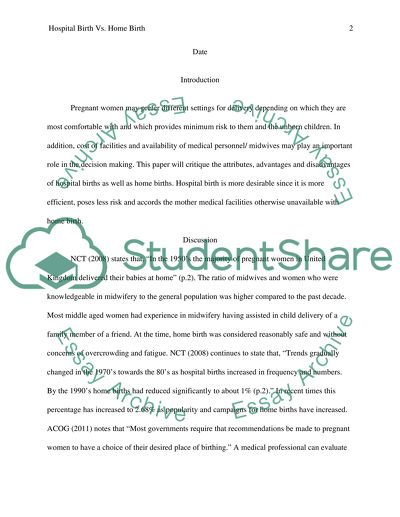Cite this document
(“Hospital Birth vs. Home Birth Essay Example | Topics and Well Written Essays - 1250 words”, n.d.)
Retrieved from https://studentshare.org/nursing/1453244-hospital-birth-vs-home-birth-critical-thinking
Retrieved from https://studentshare.org/nursing/1453244-hospital-birth-vs-home-birth-critical-thinking
(Hospital Birth Vs. Home Birth Essay Example | Topics and Well Written Essays - 1250 Words)
https://studentshare.org/nursing/1453244-hospital-birth-vs-home-birth-critical-thinking.
https://studentshare.org/nursing/1453244-hospital-birth-vs-home-birth-critical-thinking.
“Hospital Birth Vs. Home Birth Essay Example | Topics and Well Written Essays - 1250 Words”, n.d. https://studentshare.org/nursing/1453244-hospital-birth-vs-home-birth-critical-thinking.


